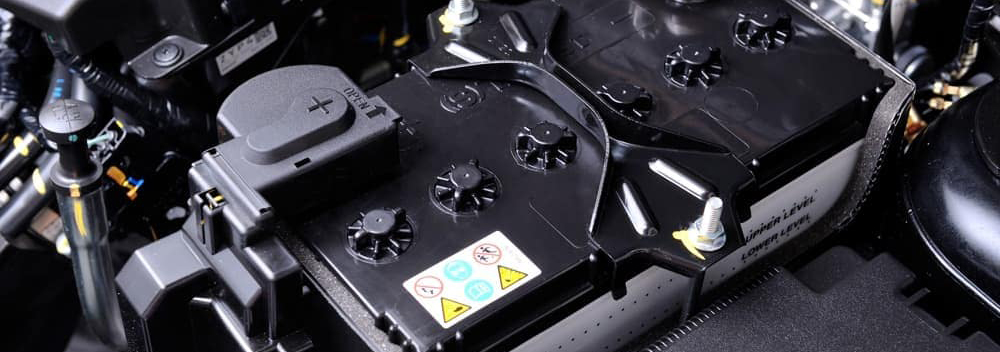
In recent years, new electrical devices are increasingly popular in automobiles with the increasing demand for riding comfort, fuel economy and environmental protection. Various advanced technology, such as electronic control systems (electronic injection, electronic suspension), cruise control, on-board computer networks, go into service.
1.4 Charging indication system
More and more electromagnetic or electric actuators in modern vehicles gradually replace hydraulic and pneumatic actuators, significantly increasing the electrical system's load. This requires higher electrical power provided by the system.
The vehicle charging system consists of alternator, battery, voltage regulator, charging indicator and related wires. Let's take a look at those components.
The alternator is the main power source for the car's electrical equipment. The alternator supplies power to other devices except for the starter during the regular car running. It also charges the battery.
In other words, when the engine is running, almost all the electricity on the car is provided by the generator. When there is a surplus of power, the generator will charge the battery.

The alternator power is 0.8-1.5 kilowatts, which can meet the car's electricity needs in most cases. When the power is insufficient, it is supplemented by the battery.
Some small-displacement engines judder when the alternator generates more power and higher load. At this time, the rotational speed automatically increases to enhance the engine power.
Most alternators on automobiles are silicon rectified three-phase alternators. The silicon diodes act as rectifiers to convert AC to DC. The typical one comprises rotor, stator, brush and slip ring mechanism, three-phase bridge rectifier, bearings, fan and front and rear end caps.
The rotor generates the magnetic field. The stator generates the current. The rectifier converts the three-phase alternating current into a DC pulsating voltage. The amount of power generated increases as the engine speed increases.
The battery is the largest electrical equipment on the car. It supplies power to the starter, ignition system and other major electrical equipment when the engine is running. When the engine stops or is working at low speed, the battery supplies power to various electrical equipment.
When there are too many devices using electricity, and the power consumption exceeds the alternator's supply capacity, the battery assists it in supplying power to various devices.
In addition, the battery can also stabilize the voltage of the power supply system. It plays the role as a large capacitor, which can absorb the instantaneous overvoltage in the circuit to protect other devices.
Many people think that the battery is the main power source on the car, but it is not. The alternator is the real power source.
When the engine is working, the alternator's output voltage is higher than the voltage of the car battery. The alternator supplies power to all electrical equipment (except the starter), and it charges the battery at the same time.
The battery only releases the internal storage to drive the starter motor only when the engine starts. It is usually an electrical appliance in most situations.
The voltage regulator adjusts the alternator's output voltage to maintain it between 13.8 to 14.4V. The output voltage rises as the engine speed increases.
If the engine speed is too high, the output voltage is too high, which damages the vehicle electrical system and some precise electronic components.

The voltage regulator can avoid these problems. Now the voltage regulator on the car is the electronic type. Most of them settle in the interior of the generator. Few of them settle outside. Most alternator failures are caused by voltage regulator failures.
1.4 Charging indication system
The charging indication system refers mainly to the voltmeter or charging indicator on the instrument panel. It indicates whether the alternator is in proper working order.
If the charging indicator lights up or the voltmeter pointer falls below 24V while the car is running, the alternator is not charging, or the charging level is too low. The charging system needs repair and maintenance.
When we turn on the ignition switch, the battery supplies excitation current to the alternator rotor, which produces a magnetic field. The engine then starts and drives the alternator.
The stator winding cuts the magnetic lines of the rotor winding, producing a three-phase AC current. The current is rectified and turned into a DC output to the outside.
At this time, due to the low speed of the generator, the excitation current is provided by the battery. This situation is called "it excitation".
As the alternator speed gets higher and higher, generating more and more power, the rotor winding current is provided by the alternator's current.

When the engine is working in order, the alternator runs at high speed with the engine, generating electricity for the car's electrical equipment. The excess power charges the battery.
When the battery gets a full charge, the voltage regulator disconnects the excitation current to the rotor. The alternator stops generating electricity.
When the battery voltage drops to a certain value, the voltage regulator turns the excitation current back on, and the alternator resumes generating electricity.
This process is repeated to ensure that the car's electrical equipment works properly. At the same time, the battery is always fully charged.
In order to ensure that the car gets enough power even at low speeds, the alternator speed is generally 2.5 to 3 times the number of the engine speed. In this situation, the charging system generates electricity normally even when the engine is idling.
Common issues of the vehicle charging system include non-charging, over-charging and under-charging. The cause is poor wiring contact or alternator failure.
Generally speaking, alternators are now highly integrated and cannot normally be detached for repair. They can only be replaced in their entirety.
For the vehicle charging system, it's forbidden to check whether the alternator normally works by instantaneous grounding (latching) of the generator output. Removing electrical equipment, such as the battery, while the generator runs at high speed is also not allowed. We should avoid the puncture of the precision electronic components.

The wiring between the alternator and the battery should be checked frequently in daily maintenance. It ensures that the connection is firm and reliable. There is no rust at the joints.
In addition, we should check the tension of the alternator belt frequently. The alternator speed can be too low if the belt is too loose to generate enough power. The too-tight belt easily causes damage to the alternator bearings.
The power supplied by the automotive electrical equipment is a DC power supply, which is from the battery or alternator. The charging system consists of a battery, an alternator, a voltage regulator, a charging state indicator, a switch and wiring.
The battery and alternator are in parallel. Power is supplied to the electric device and charges the battery when the engine is working.
When starting, the battery is powered to the starter. Since the engine rotates the alternator through the drive belt, the generator output voltage varies when the engine speed changes.
In order to meet the requirements of automotive electrical equipment and the constant voltage of battery charging, the voltage regulator in the charging system ensures that the voltage output from the alternator is stabilized to a certain range.
This prevents damage to the electric equipment due to excessive voltage from voltage fluctuation. The charging state indicator indicates the charge and discharge status of the battery.
At present, the charging system on the automobile can be divided into 12V electrical system and 24V electrical system. The alternator and electronic regulator go into service.
According to the different electronic regulator installations, the arrangement of the power system can be divided into two types of separation and integral.
The voltage regulator only adjusts the alternator's output voltage in the charging system. It uses an ammeter to indicate the charge and discharge state of the battery.
The ammeter installs on the combined dashboard. It requires a large space, so this arrangement is suitable for the power system structure simple, and a loaded car is sufficiently installed.

The voltage regulator also can adjust the alternator's output voltage. It controls the charging indicator to indicate the battery's state of charge.
The charging indicator can be installed on the combined dashboard, and the occupied space is small, so this arrangement applies to the cargo car and a compact car.
When the regulator is separated from the alternator, the system has a higher failure rate since the wire connection is required. Many issues can be diagnosed when the system fails. After replacing the bad components, the vehicle can run on the road.
 Lauritz Carolsfeld
Lauritz Carolsfeld  March 04, 2022
March 04, 2022